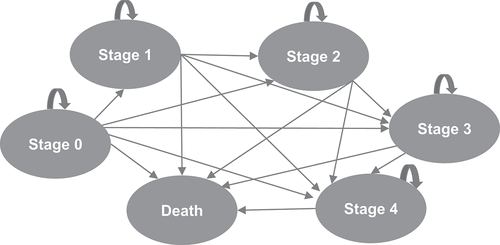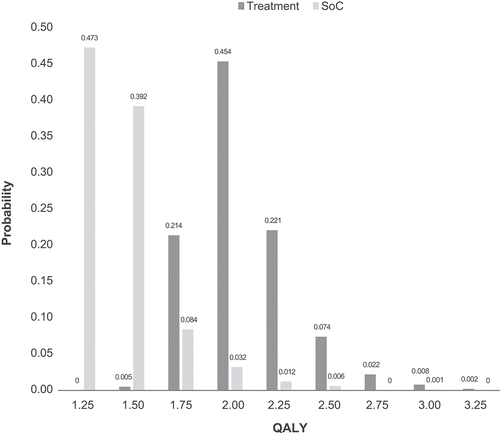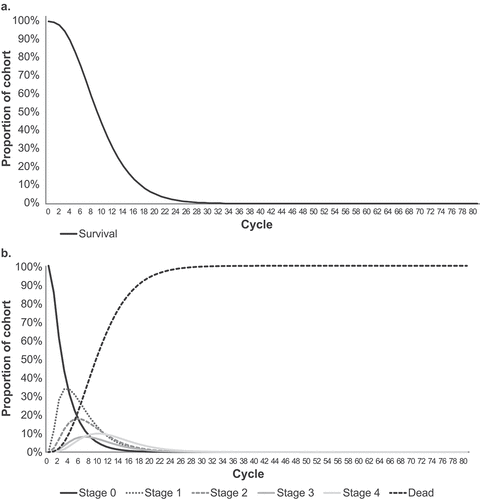Figures & data
Figure 1. MiToS-based model structure.

Table 1. EQ-5D-5 L scores for MiToS stages (Moore et al. [Citation23]).
Table 2. Transition probability matrix for standard of care (Thakore et al. [Citation14]).
Table 3. Patient distributions in the three scenarios.
Table 4. Model input values for base case, one-way analysis sensitivity and probabilistic sensitivity analyses.
Table 5. QALY and LY for a range of hypothetical treatment effects versus standard of care: patient distribution based on a pooled dataset (scenario 3).
Figure 2. Incremental QALYs and LYs for a range of hypothetical treatment effects versus standard of care over a 10-year horizon, for 3 scenarios of patient distribution.

Table 6. QALY for a treatment with hypothetical RR of 0.65 versus standard of care for each MiToS stage: patient distribution based on a pooled dataset (scenario 3).
Figure 3. Tornado diagram from one-way sensitivity: incremental QALYs of hypothetical treatment effect versus standard of care over a 10-year horizon, for scenario 3 of patient distribution.

Figure 4. Histogram from probabilistic sensitivity analyses: QALYs of hypothetical treatment effect and standard of care over a 10-year horizon, for scenario 3 of patient distribution.

Supplemental Material
Download PDF (182.8 KB)Data availability statement
All data generated or analyzed during this study are included in this published article and its supplementary information files.

